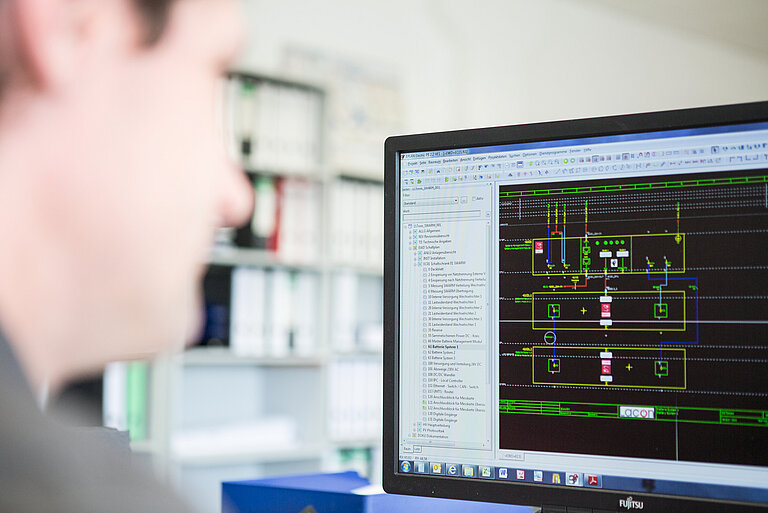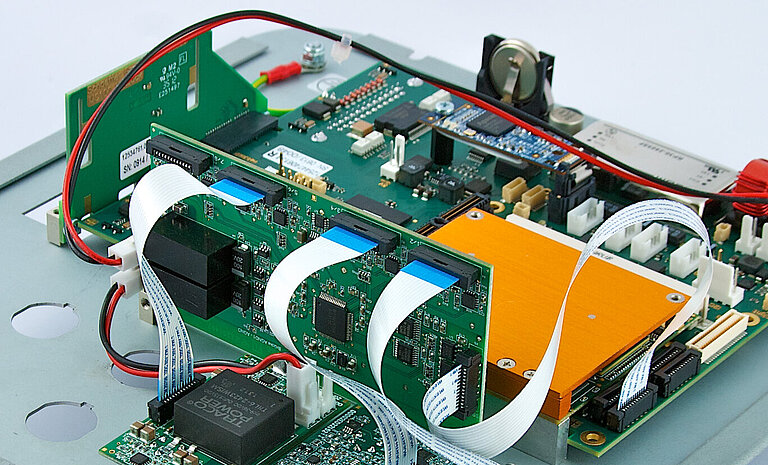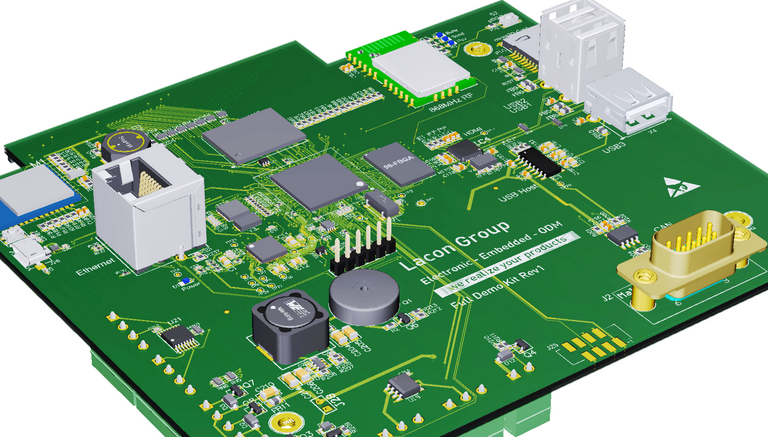We at Lacon Electronics are the first choice for your software development. Thanks to our team of experts, we deliver customised solutions that move your products forward.
We have expertise in a wide range of industries and a long history of success and satisfied customers. From robust backend systems to intuitive user interfaces, we excel at developing solutions that meet and exceed expectations. Our agile methodology also ensures flexibility, transparency and on-time delivery.
Partner with us to harness the power of innovation and take your business to new heights.
Why should you choose us?
- Industry expertise: Our team consists of experienced experts for your industry. We know the specific challenges and requirements you face and can therefore offer you solutions that are truly customised to your needs.
- Customised solutions: We don't believe in one-size-fits-all solutions. Instead, we work closely with you to understand your specific goals and requirements and develop customised software solutions that meet your unique challenges.
- Agile methodology: Our agile approach ensures that projects are delivered on time. By breaking projects down into manageable tasks and constant communication, we ensure flexibility and adaptability throughout the development process.
- Quality Assurance: We strive to deliver high quality work that exceeds your expectations. Our rigorous quality assurance processes ensure that every piece of software we develop is thoroughly tested and meets the highest standards.
Agile methodology is a modern approach to software development that emphasises flexibility, collaboration and customer satisfaction. By dividing projects into small, iterative cycles and emphasising adaptive planning, Agile enables teams to respond quickly to changing requirements and deliver valuable software incrementally. By emphasising continuous improvement and customer feedback, Agile enables teams to deliver high-quality solutions that meet changing requirements.
In the world of industry, technology is the engine of innovation and efficiency. From programming languages to communication protocols, there are a variety of tools that companies can use to optimise their processes and adapt to changing requirements. By utilising these technologies, industries can drive growth, increase productivity and become leaders in their respective fields.
- Linux kernel
The Linux kernel is the core of the Linux operating system, which is responsible for managing hardware resources, providing system services and facilitating communication between software and hardware components. - RTOS (real-time operating systems)
In industrial real-time applications where timing is critical, specialised operating systems such as FreeRTOS or QNX are often used to ensure precise control and response times. - Linux scripting
Linux scripting refers to the use of scripting languages such as Bash, Python or Perl to automate tasks and perform system management functions on Linux operating systems. - Yocto
Yocto is a tool for creating your own Linux distributions for embedded systems. It provides a set of tools and metadata to create lightweight and customisable Linux images tailored to specific hardware requirements. - C/C++
C and C++ are powerful low-level programming languages commonly used in industrial applications where performance and efficiency are critical. They are often chosen for embedded systems, real-time applications and low-level hardware control. - QT
Qt is a cross-platform application framework for the development of applications with a graphical user interface (GUI). It provides tools and libraries for building intuitive and responsive interfaces for different platforms. - Python
Python is a high-level programming language known for its simplicity, readability and versatility. It is often used in industrial applications for tasks such as data analysis, machine learning and scripting, as it has extensive libraries and can be easily integrated with other technologies. - SQL
Industrial applications often require robust mechanisms for data storage and retrieval. SQL databases such as MySQL, PostgreSQL or Oracle are often used for structured data storage.
- SQL Server Reporting Services
SQL Server Reporting Services (SSRS) is a server-based reporting platform from Microsoft that enables organisations to create, manage and deliver interactive, graphical reports based on data stored in SQL Server databases. - C#/.NET
C# is a versatile programming language developed by Microsoft and commonly used within the .NET framework. Together they provide a powerful platform for developing a wide range of applications, including desktop, web and mobile applications. With its rich set of libraries, tools and language features, C#/.NET enables the creation of efficient, scalable and cross-platform solutions for various industries and domains. - HTML
HTML (Hypertext Markup Language) is the standard markup language used to create websites and web applications. It provides the structure and layout of web content and is essential for creating static and dynamic websites. - JavaScript/Node.js
JavaScript is often used for the development of web-based industrial applications, especially for the development of user interfaces. Node.js, a JavaScript runtime environment, is also very popular for server-side development and enables complete JavaScript development for industrial applications. - CSS
CSS (Cascading Style Sheets) is a styling language used to describe the presentation of HTML documents. It allows developers to control the layout, colours, fonts and other visual aspects of web pages to ensure a consistent and visually appealing user experience. - Docker
Docker is a platform for creating, shipping and running containerised applications. It allows applications and dependencies to be packaged into lightweight, portable containers that can be run consistently in different environments. - Unity
Unity is a popular game development platform used to create 2D and 3D games for various platforms, including desktop, mobile and consoles. It offers a wide range of tools, assets and features to streamline game development and deployment processes.
Testing, which is crucial for product reliability, includes the evaluation of both software and hardware components. In software testing, various methods such as unit, integration and acceptance testing ensure functionality and security, while hardware testing evaluates durability, compatibility and performance under stress and environmental conditions. Integration tests check the seamless interaction of software and hardware. Regression tests identify and rectify existing functional problems.
Continuous testing throughout development ensures quality, while automation tools increase efficiency. By integrating testing into the CI/CD pipeline, our teams can accelerate delivery while ensuring quality. Thorough testing also mitigates risk and ensures that products meet your expectations, user expectations and industry standards.
The agile methodology is an iterative approach to software development and project management. It emphasises flexibility, collaboration and customer satisfaction by delivering small, functional parts of a project in short periods of time, known as iterations or sprints. The agile methodology is in contrast to traditional, linear project management approaches such as the waterfall model. The key principles and practices of agile methodology include: Iterative development, collaboration, customer feedback, adaptability, continuous delivery, self-organising teams and prioritisation.
Regression testing is a type of software testing designed to ensure that new code changes or modifications to an existing software application do not affect the existing functionality. The main goal of regression testing is to detect and identify unintended side effects that may occur as a result of code changes, bug fixes or enhancements.
Here are the key aspects of regression testing: regression detection, comprehensive coverage, automation, continuous integration/continuous delivery (CI/CD), maintaining software quality and test maintenance.
CI/CD stands for Continuous Integration and Continuous Deployment (or Continuous Delivery), and a CI/CD pipeline is a series of automated processes that facilitate the integration, testing and deployment of software changes. The main goal is to streamline the development and release process to enable frequent and reliable delivery of software updates to end users. The CI/CD pipeline usually consists of several phases, including Continuous Integration, Continuous Testing and Continuous Deployment.















